
Mars, the fourth planet from the Sun, has appeared as a setting in works of fiction since at least the mid-1600s. Trends in the planet's portrayal have largely been influenced by advances in planetary science. It became the most popular celestial object in fiction in the late 1800s, when it became clear that there was no life on the Moon. The predominant genre depicting Mars at the time was utopian fiction. Around the same time, the mistaken belief that there are canals on Mars emerged and made its way into fiction, popularized by Percival Lowell's speculations of an ancient civilization having constructed them. The War of the Worlds, H. G. Wells's novel about an alien invasion of Earth by sinister Martians, was published in 1897 and went on to have a major influence on the science fiction genre.
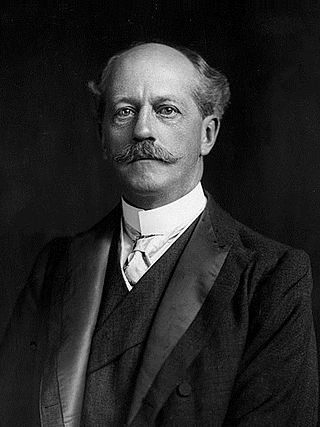
Percival Lowell was an American businessman, author, mathematician, and astronomer who fueled speculation that there were canals on Mars, and furthered theories of a ninth planet within the Solar System. He founded the Lowell Observatory in Flagstaff, Arizona, and formed the beginning of the effort that led to the discovery of Pluto 14 years after his death.

Lowell Observatory is an astronomical observatory in Flagstaff, Arizona, United States. Lowell Observatory was established in 1894, placing it among the oldest observatories in the United States, and was designated a National Historic Landmark in 1965. In 2011, the Observatory was named one of "The World's 100 Most Important Places" by Time Magazine. It was at the Lowell Observatory that the dwarf planet Pluto was discovered in 1930 by Clyde Tombaugh.
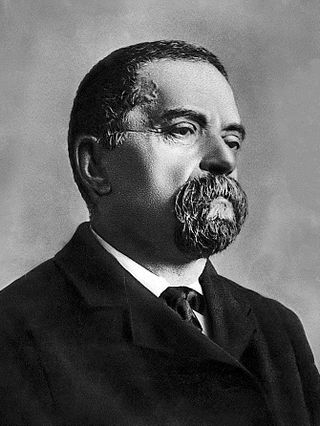
Giovanni Virginio Schiaparelli was an Italian astronomer and science historian.

Space: 1889 is a tabletop role-playing game of Victorian-era space-faring, created by Frank Chadwick and originally published by Game Designers' Workshop (GDW) from 1989 to 1990. It was the first roleplaying game to feature space colonization using steam technology in the style of Jules Verne, H.G. Wells, and Arthur Conan Doyle in what would later be called steampunk. The setting of Space: 1889 has not only produced roleplaying games, but boardgames, books, miniatures and a computer game.
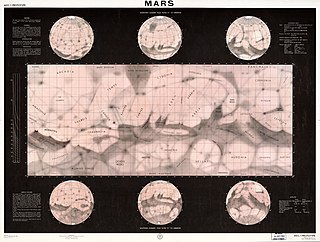
During the late 19th and early 20th centuries, it was erroneously believed that there were "canals" on the planet Mars. These were a network of long straight lines in the equatorial regions from 60° north to 60° south latitude on Mars, observed by astronomers using early telescopes without photography.
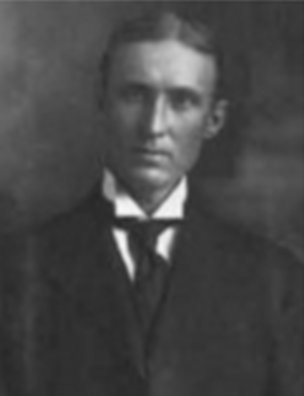
Carl Otto Lampland was an American astronomer. He was involved with both of the Lowell Observatory solar system projects, observations of the planet Mars and the search for Planet X.

A Princess of Mars is a science fantasy novel by American writer Edgar Rice Burroughs, the first of his Barsoom series. It was first serialized in the pulp magazine All-Story Magazine from February–July, 1912. Full of swordplay and daring feats, the novel is considered a classic example of 20th-century pulp fiction. It is also a seminal instance of the planetary romance, a subgenre of science fantasy that became highly popular in the decades following its publication. Its early chapters also contain elements of the Western. The story is set on Mars, imagined as a dying planet with a harsh desert environment. This vision of Mars was based on the work of the astronomer Percival Lowell, whose ideas were widely popularized in the late 19th and early 20th centuries.

The Warlord of Mars is a science fantasy novel by American writer Edgar Rice Burroughs, the third of his Barsoom series. Burroughs began writing it in June, 1913, going through five working titles; Yellow Men of Barsoom, The Fighting Prince of Mars, Across Savage Mars, The Prince of Helium, and The War Lord of Mars.

The Master Mind of Mars is a science fantasy novel by American writer Edgar Rice Burroughs, the sixth of his Barsoom series. Burroughs' working titles for the novel were A Weird Adventure on Mars and Vad Varo of Barsoom. It was first published in the magazine Amazing Stories Annual vol. 1, on July 15, 1927. The first book edition was published by A. C. McClurg in March, 1928.
The classical albedo features of Mars are the light and dark features that can be seen on the planet Mars through an Earth-based telescope. Before the age of space probes, several astronomers created maps of Mars on which they gave names to the features they could see. The most popular system of nomenclature was devised by Giovanni Schiaparelli, who used names from classical antiquity. Today, the improved understanding of Mars enabled by space probes has rendered many of the classical names obsolete for the purposes of cartography; however, some of the old names are still used to describe geographical features on the planet.

Barsoom is a fictional representation of the planet Mars created by American pulp fiction author Edgar Rice Burroughs. The first Barsoom tale was serialized as Under the Moons of Mars in pulp magazine The All-Story from February to July 1912 and published compiled as a novel as A Princess of Mars in 1917. It features John Carter, a late-19th-century American Confederate veteran who is mysteriously transported from Earth to the dying world of Mars where he meets and romances the beautiful Martian princess Dejah Thoris. Ten sequels followed over the next three decades, further extending his vision of Barsoom and adding other characters.

The history of Mars observation is about the recorded history of observation of the planet Mars. Some of the early records of Mars' observation date back to the era of the ancient Egyptian astronomers in the 2nd millennium BCE. Chinese records about the motions of Mars appeared before the founding of the Zhou dynasty. Detailed observations of the position of Mars were made by Babylonian astronomers who developed arithmetic techniques to predict the future position of the planet. The ancient Greek philosophers and Hellenistic astronomers developed a geocentric model to explain the planet's motions. Measurements of Mars' angular diameter can be found in ancient Greek and Indian texts. In the 16th century, Nicolaus Copernicus proposed a heliocentric model for the Solar System in which the planets follow circular orbits about the Sun. This was revised by Johannes Kepler, yielding an elliptic orbit for Mars that more accurately fitted the observational data.
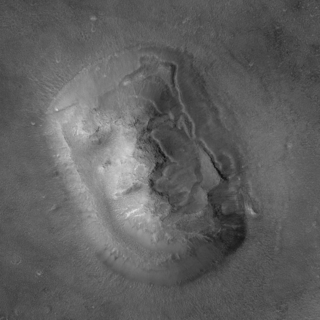
The planet Mars is named after the Roman god of war Mars. In Babylonian astronomy, the planet was named after Nergal, their deity of fire, war, and destruction, most likely due to the planet's reddish appearance. Whether the Greeks equated Nergal with their god of war, Ares, or whether both drew from a more ancient association is unclear. In the age of Plato, the Greeks called the planet Ἄρεως ἀστἡρ, or "star of Ares". Following the identification of Ares and Mars, it was translated into Latin as stella Martis, or "star of Mars", or simply Mars. The Hellenistic Greeks also called the planet Πυρόεις Pyroeis, meaning "fiery".

The War of the Worlds is a science fiction novel by English author H. G. Wells. It was written between 1895 and 1897, and serialised in Pearson's Magazine in the UK and Cosmopolitan magazine in the US in 1897. The full novel was first published in hardcover in 1898 by William Heinemann. The War of the Worlds is one of the earliest stories to detail a conflict between humankind and an extraterrestrial race. The novel is the first-person narrative of an unnamed protagonist in Surrey and his younger brother in London as southern England is invaded by Martians and is one of the most commented-on works in the science fiction canon.
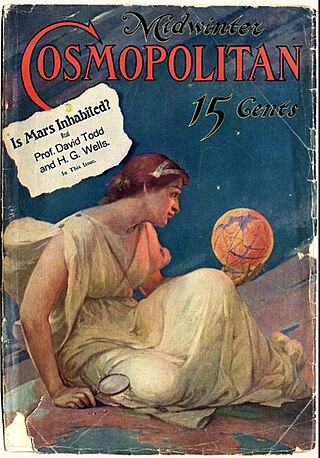
"The Things that Live on Mars" is a 1908 non-fiction essay by English writer H. G. Wells, with four illustrations by American artist William Robinson Leigh, about the habitability and possibility of life on Mars, ideas that Wells had previously explored a decade earlier in his science fiction work The War of the Worlds (1898). "The Things that Live on Mars" was originally published in Cosmopolitan, in the same issue as "Story of the Mars Expedition", an essay by American astronomer David Peck Todd describing the 1907 Lowell expedition to Chile, an attempt to capture images of the purported Martian canals. Lowell's canals were later discredited and explained as an optical illusion in the early 20th century.
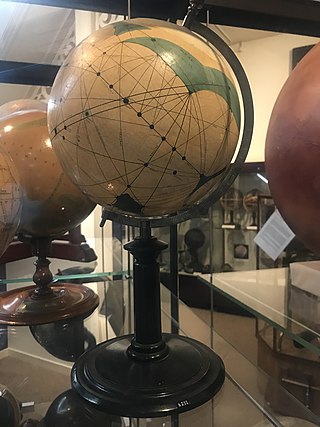
Ingeborg Brun was a Danish amateur astronomer, socialist and writer and best known for her hand-painted globes depicting the surface of Mars.

Project Mars: A Technical Tale is a 2006 science fiction novel by German-American rocket physicist, Wernher von Braun (1912–1977), credited as Dr. Wernher von Braun. It was written by von Braun in German in 1949 and entitled Marsprojekt. Henry J. White (1892–1962) translated the book into English and it was published later by Apogee Books (Canada) in 2006 as Project Mars: A Technical Tale, almost thirty years after von Braun's death. The original German text remains unpublished.

Imagining Mars: A Literary History is a 2011 non-fiction book by science fiction scholar Robert Crossley. The book chronicles the history of Mars in fiction, and to a lesser extent in culture. The overarching thesis of the work is that the scientific understanding of Mars and the versions of the planet imagined in works of fiction have developed in parallel and influenced each other. It covers a timeframe spanning from the pre-telescope era up to the present day, especially the time period after 1877. Particular attention is paid to the influence of amateur astronomer Percival Lowell (1855–1916), who popularized the myth of Martian canals in the public consciousness, and science fiction author H. G. Wells (1866–1946) who wrote the seminal 1897 novel The War of the Worlds. The book charts how the depiction of Mars changed throughout the second half of the 1900s in response to successive advances in planetary science, while noting that some authors preferred to continue portraying the planet in a nostalgic way that was by then scientifically outdated.
Is Mars Habitable? A Critical Examination of Professor Percival Lowell's Book "Mars and Its Canals," with an Alternative Explanation is a 1907 non-fiction book by British naturalist Alfred Russel Wallace (1823–1913). The work is a followup to his previous work, Man's Place in the Universe (1903), which initially explored the potential for extraterrestrial life. Is Mars Habitable? follows a similar theme, but is more of a reply and refutation of the book Mars and Its Canals (1906) by astronomer Percival Lowell. Lowell famously argued that an advanced, intelligent civilization engineered Martian canals on the surface of the planet, a now-discredited idea. Wallace's book evaluates Lowell's theory, eventually concluding that Mars "is not only uninhabited by intelligent beings such as Mr. Lowell postulates, but is absolutely uninhabitable", a conclusion Wallace had already reached in Man's Place in the Universe. Historian Charles H. Smith refers to Wallace's book as one of the first works in the field of astrobiology.
















